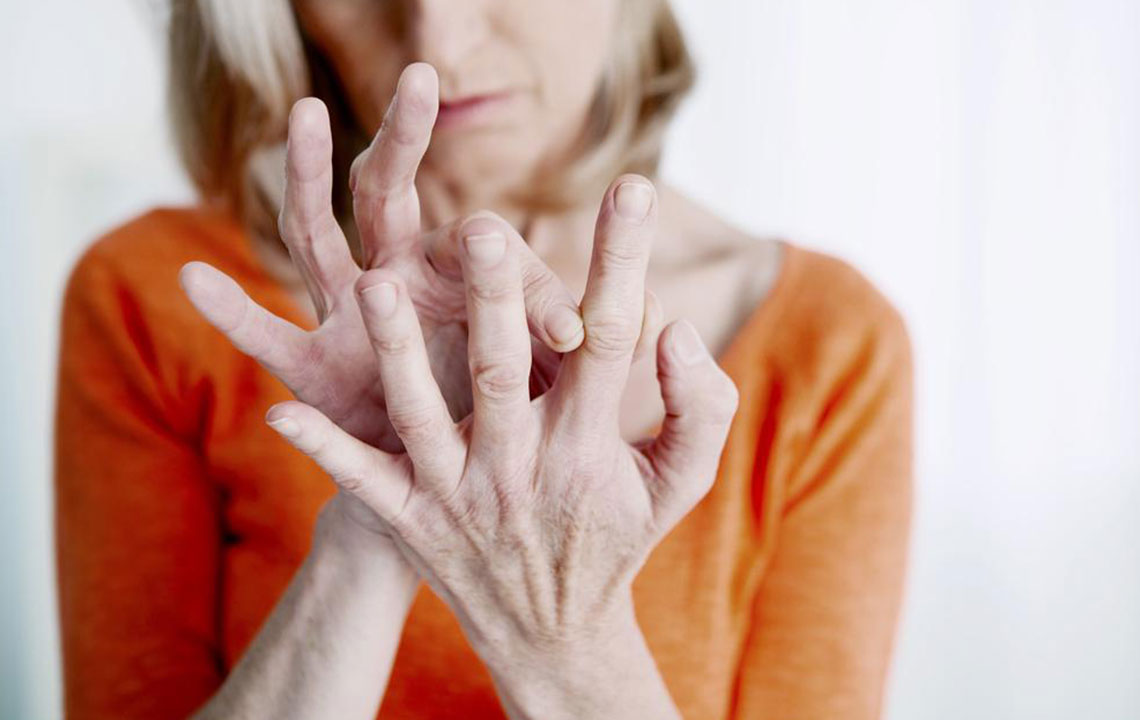Know the Common Symptoms Of Rheumatoid Arthritis

More than 1.5 million people report cases of rheumatoid arthritis in America every year, and this condition is three times more common in women than in men. It is one of the most common diseases of the joints which generally occurs in aged people. However, there are simple ways you can recognize the symptoms of this condition before it gets worse. Read on to find out more about them.
What is rheumatoid arthritis?
Rheumatoid arthritis is a disease which results due to an adverse reaction of the body’s immune system. The immune system in your body is meant to protect you from dangers and illnesses, but in this case, the immune system mistakes the joints to be a threat and attacks them, resulting in an autoimmune disease.
This condition affects a particular tissue which acts as a lining on the inner sides of your joints and causes swelling and pain in them. This tissue (called Synovium) is responsible for generating a fluid which lubricates the joints to keep them functioning smoothly. When the inflammation is left untreated, it causes damage to the cartilage, the tissues that cover the ends of your joints, and also the bone. This leads to loosening of joints making them unstable and painful.
If this condition is diagnosed at an early stage, it is possible to reverse this loss in stability and get your joints to function properly again. It is important that you take care to not miss any of the symptoms of rheumatoid arthritis. If you experience any of the symptoms mentioned below, consult a doctor immediately.
Common symptoms of rheumatoid arthritis
Fatigue
One of the most common symptoms of rheumatoid arthritis is fatigue, especially when there is inflammation. This occurs because your body reacts to the inflammation along with poor sleep, medications, and anemia. This can even adversely affect your emotions causing mood swings, lowered productivity, loss of appetite, and much more.
Joint pain
Another one of the symptoms of rheumatoid arthritis inflamed tissues in your joints can cause pain and irritation. The inflammation occurs because of excess joint fluid and also the swelling of the synovium tissue. Joint pain can also occur if the disease has affected you in the past and caused damage, even when it is inactive.
Tenderness in your joints
The inflamed tissues in rheumatoid arthritis can affect the nerves within the joint and cause the joint to become tender. Even a slight touch on these areas can cause immense pain. This is one reason why people with rheumatoid arthritis can’t sleep at night.
Swollen joints
This is another one of the extremely common symptoms of rheumatoid arthritis. Sometimes the swelling may be minimal and not very noticeable, but other times the swelling is quite evident. Most people suffering from rheumatoid arthritis can tell whether their joints are swollen and which ones they are. This can lead loss in the range of motion of the joints. It can be difficult for you to get your rings off in this case.
Redness and warmth in your joints
The swelling in your joints can lead to redness on the skin right above the widened nerves. The widening of the nerves or capillaries occurs because of the inflammation in the adjacent tissues. This case, however, is not the same for all the affected joints. Sometimes when the inflammation is inadequate, the capillaries can also get dilated.
Sometimes, the affected joints can appear to be warm. This is a result of an active swelling in the tissues. Doctors generally look for this warmth to judge the progression of the disease. When you’re under medication, as your body responds to the medication, the warmth decreases. Sometimes, joint warmth can also be present without any apparent redness or swelling.
Loss of the range of movement in joints
The swelling of tissues within your joints can lead to loss of movement. This mostly occurs in the weak joints of your body. If left untreated, rheumatoid arthritis can also cause a permanent loss in the range of motion of some joints.
Deformation of your joints
This generally occurs as one of the symptoms of rheumatoid arthritis which is a result of an untreated inflammation in your joints. The swelling eventually causes loss of cartilage and bone and can even cause laxity (loosening of ligaments). This leads to deformation in your joints.
Numbness
Sometimes, the inflammation can strain and push the adjoining blood vessels, leading to a tingling sensation in other parts of your bodies. You also have a numb sensation in these joints. Some popular places where this occurs are wrists, elbows, and ankles.
Rheumatoid arthritis can cause a lot of discomforts and also permanent damage to your joints. Some over-the-counter medications can help you with inflammation and swelling. However, these will not help cure the disease. If you experience any of the symptoms mentioned above, ensure that you consult with a doctor to get proper treatment in time before the disease worsens.


